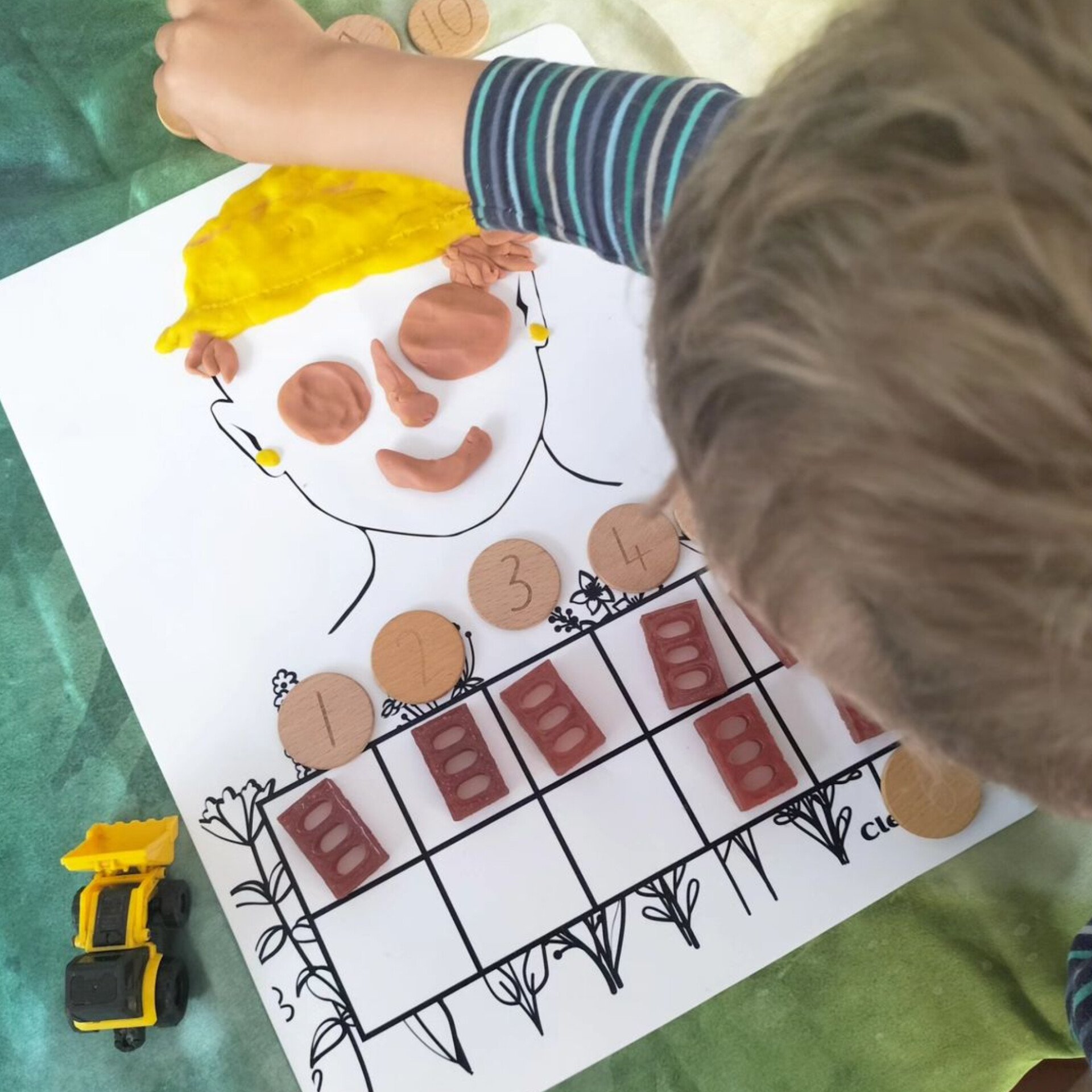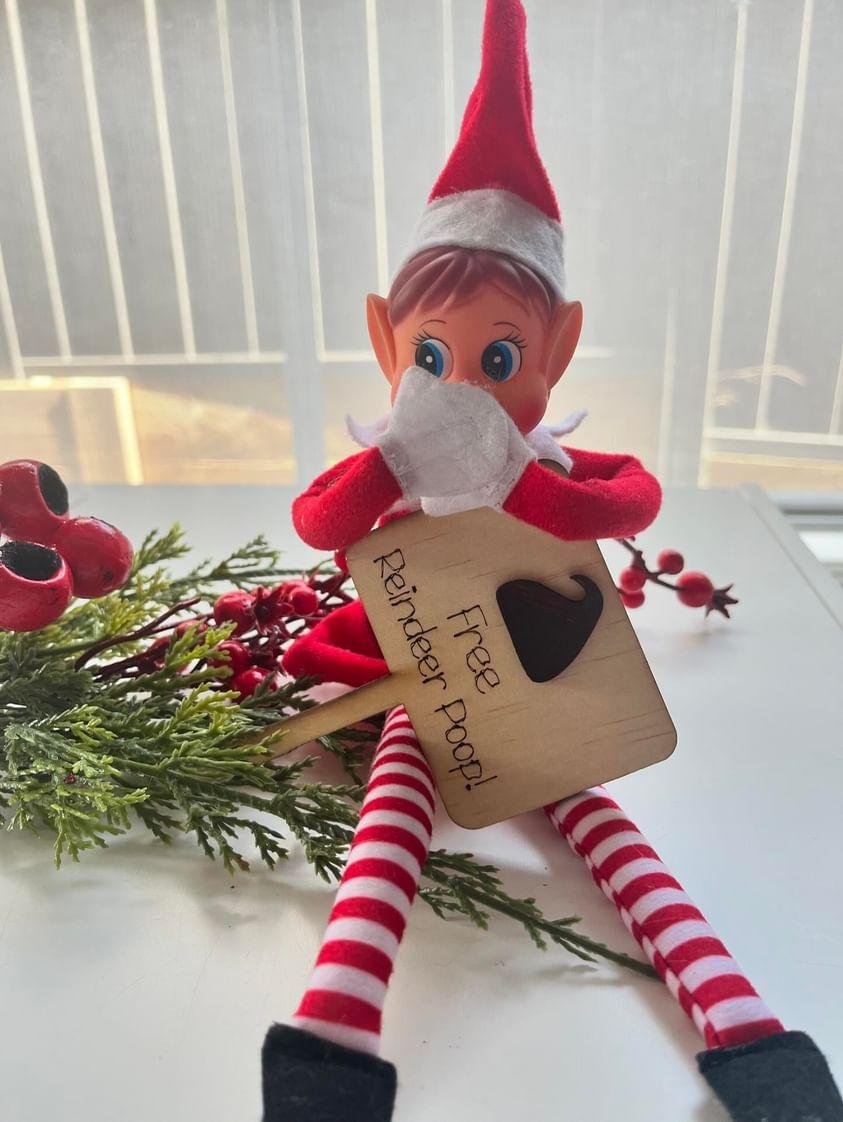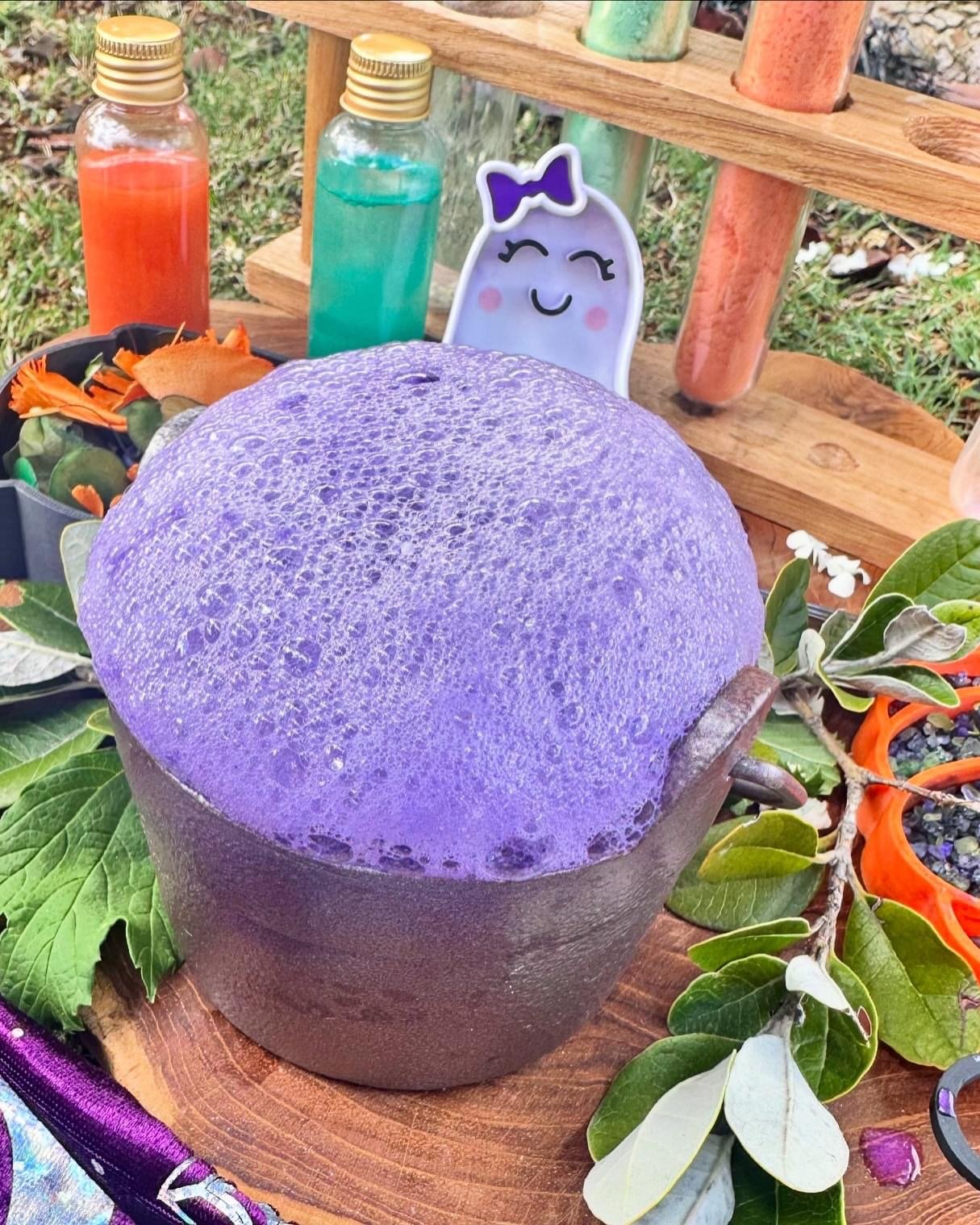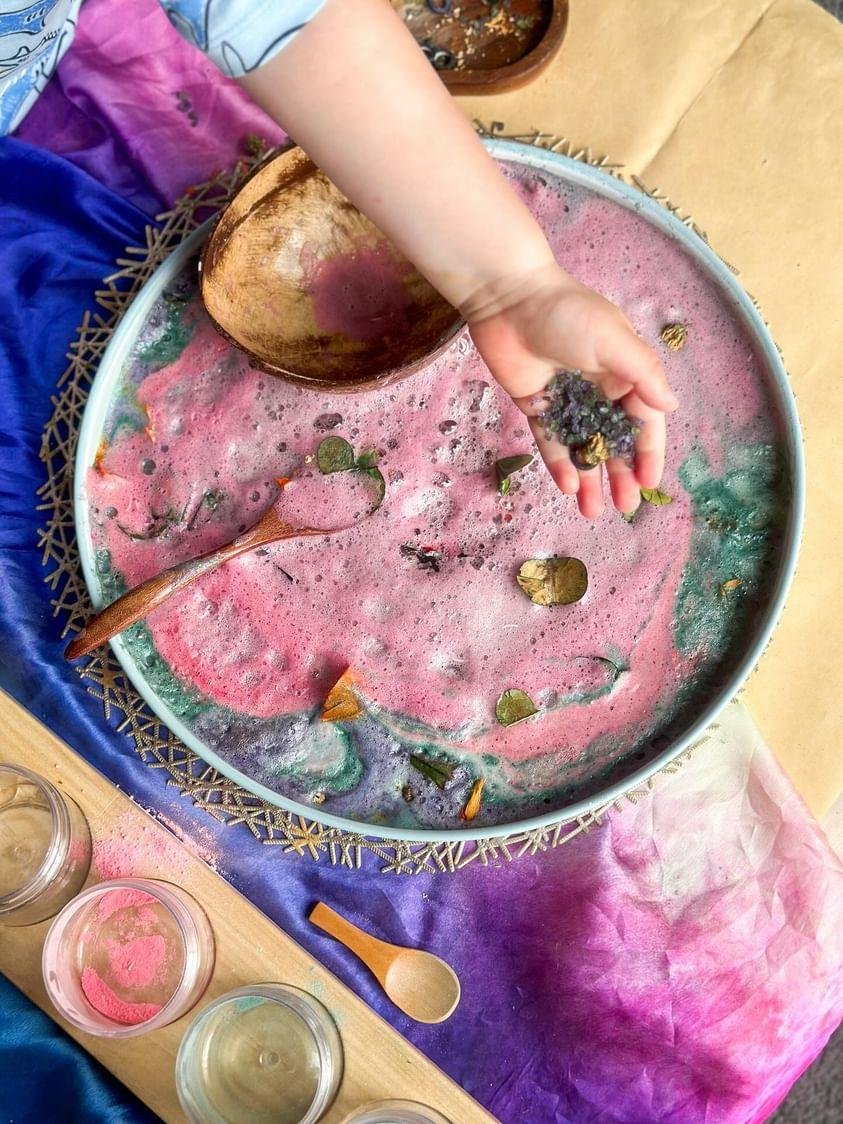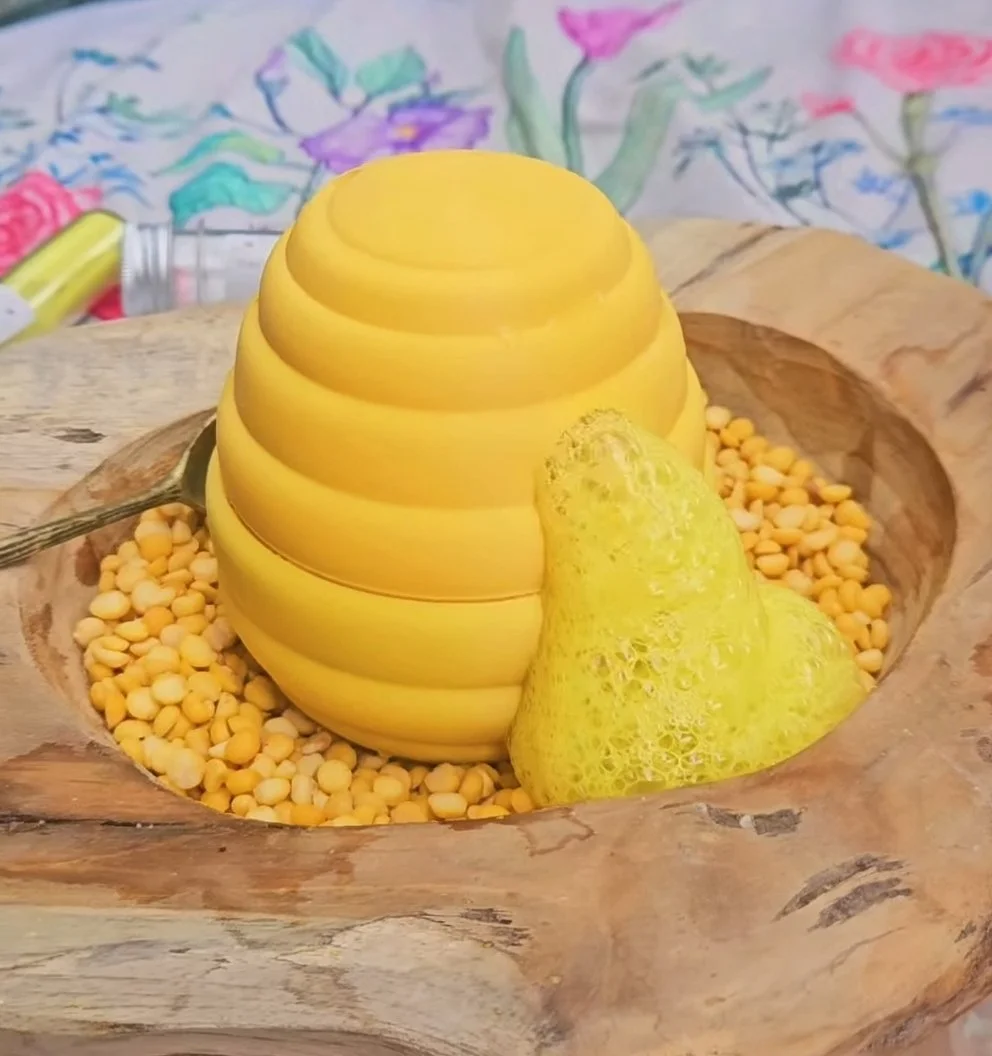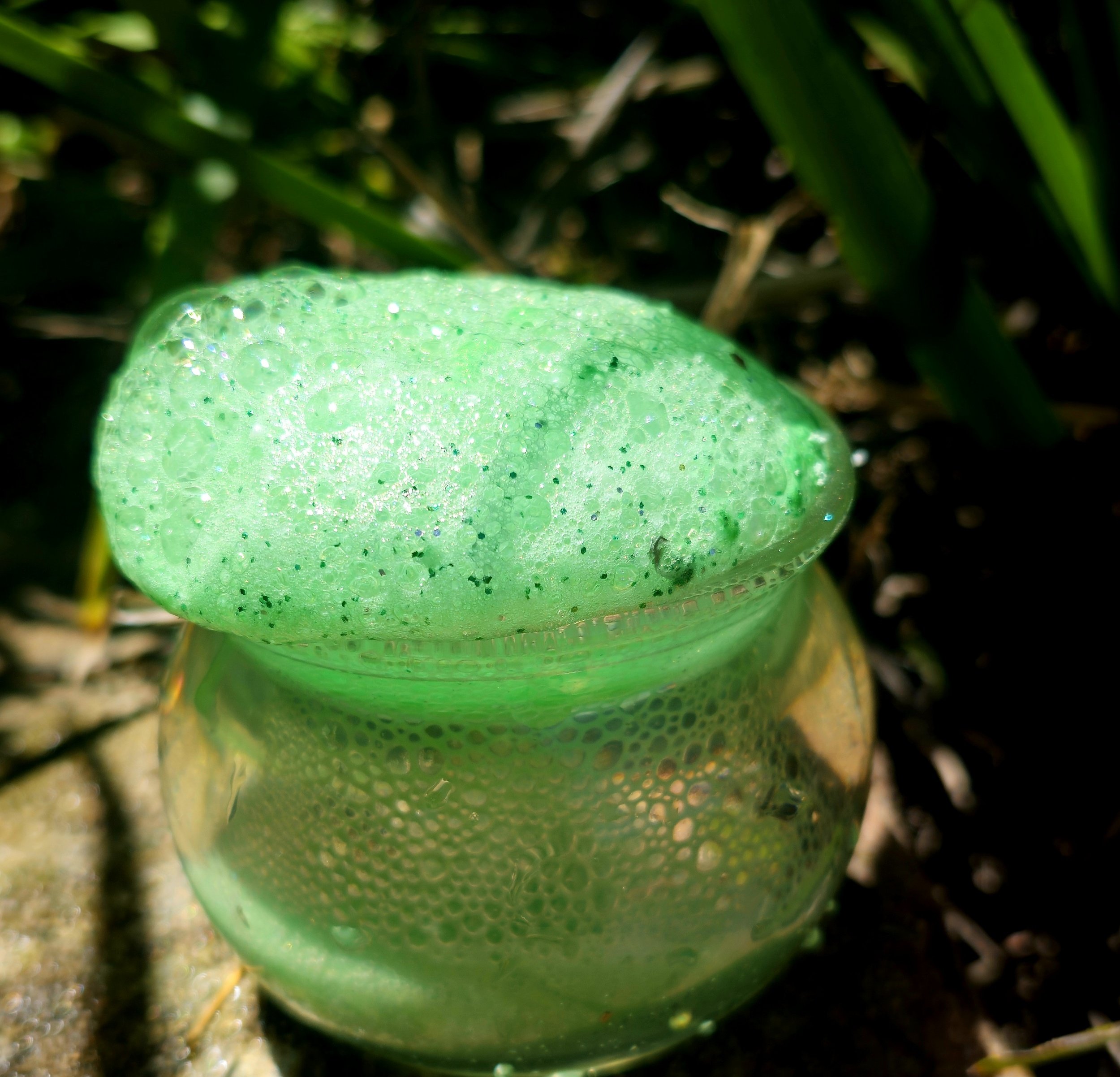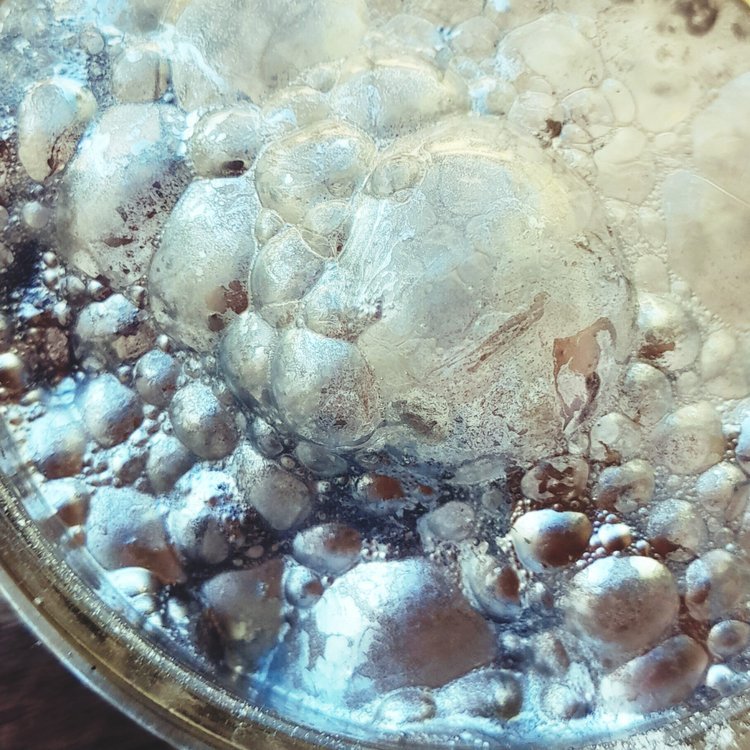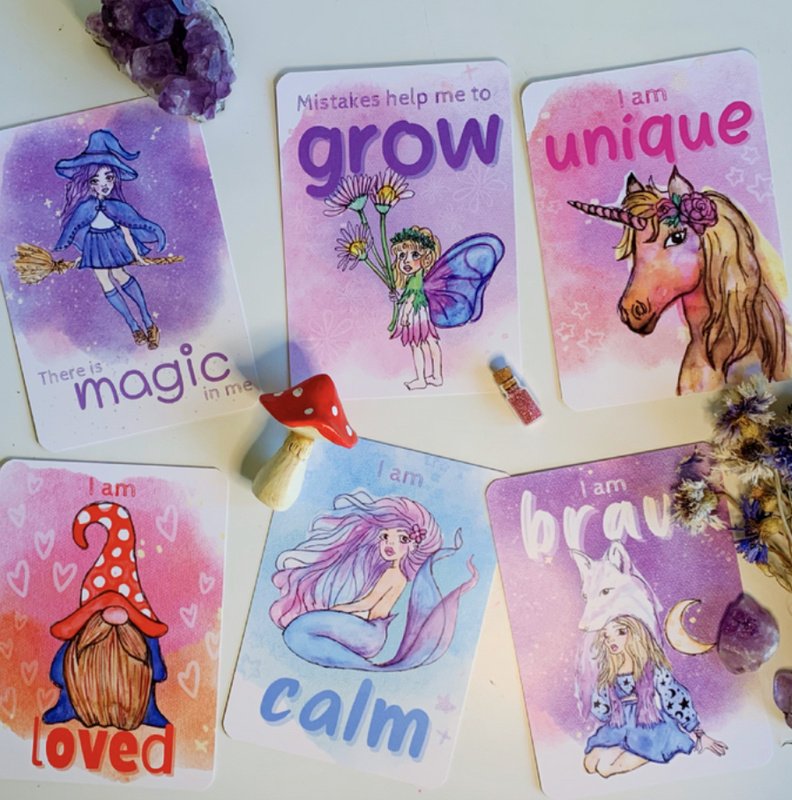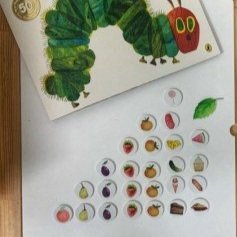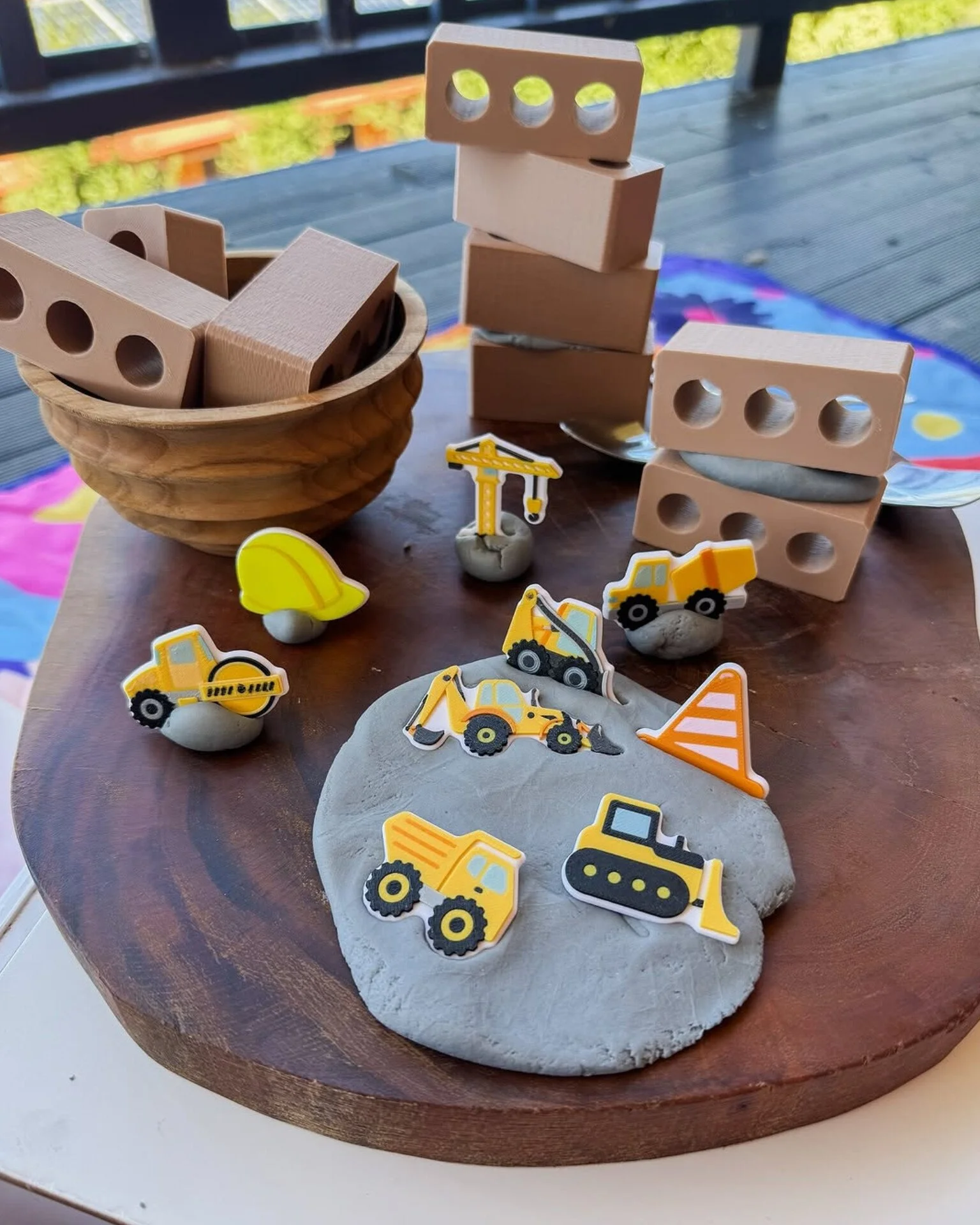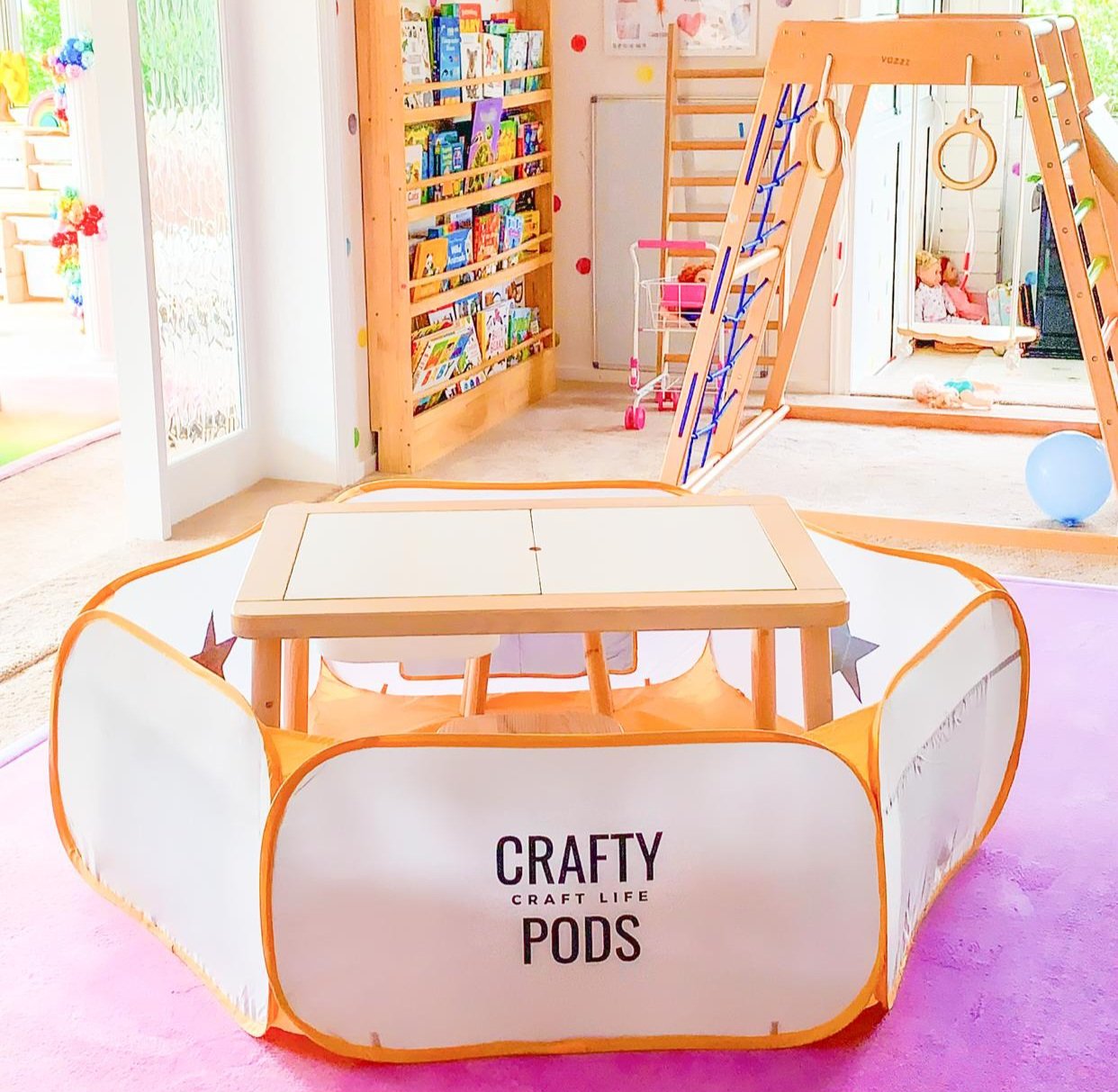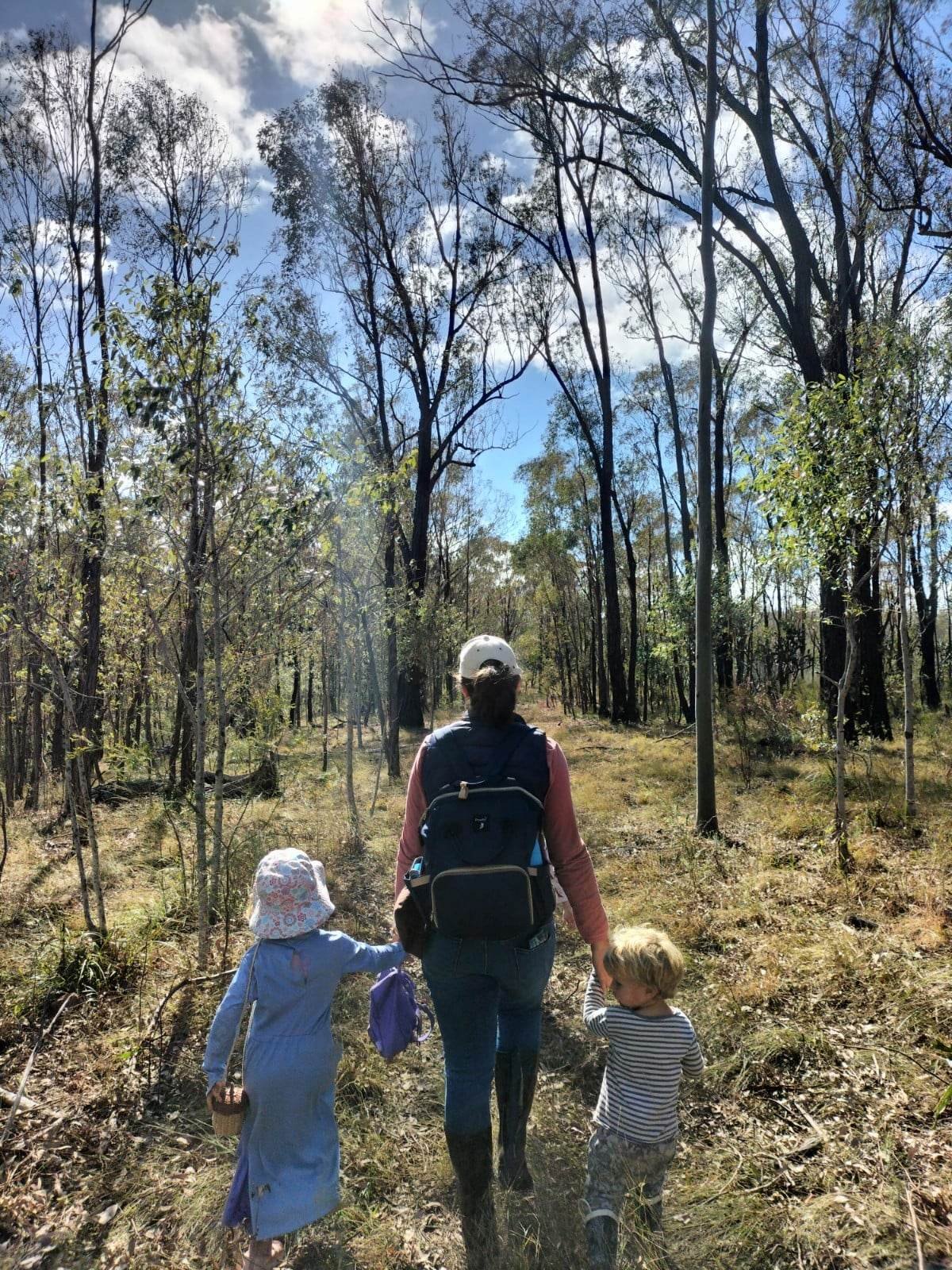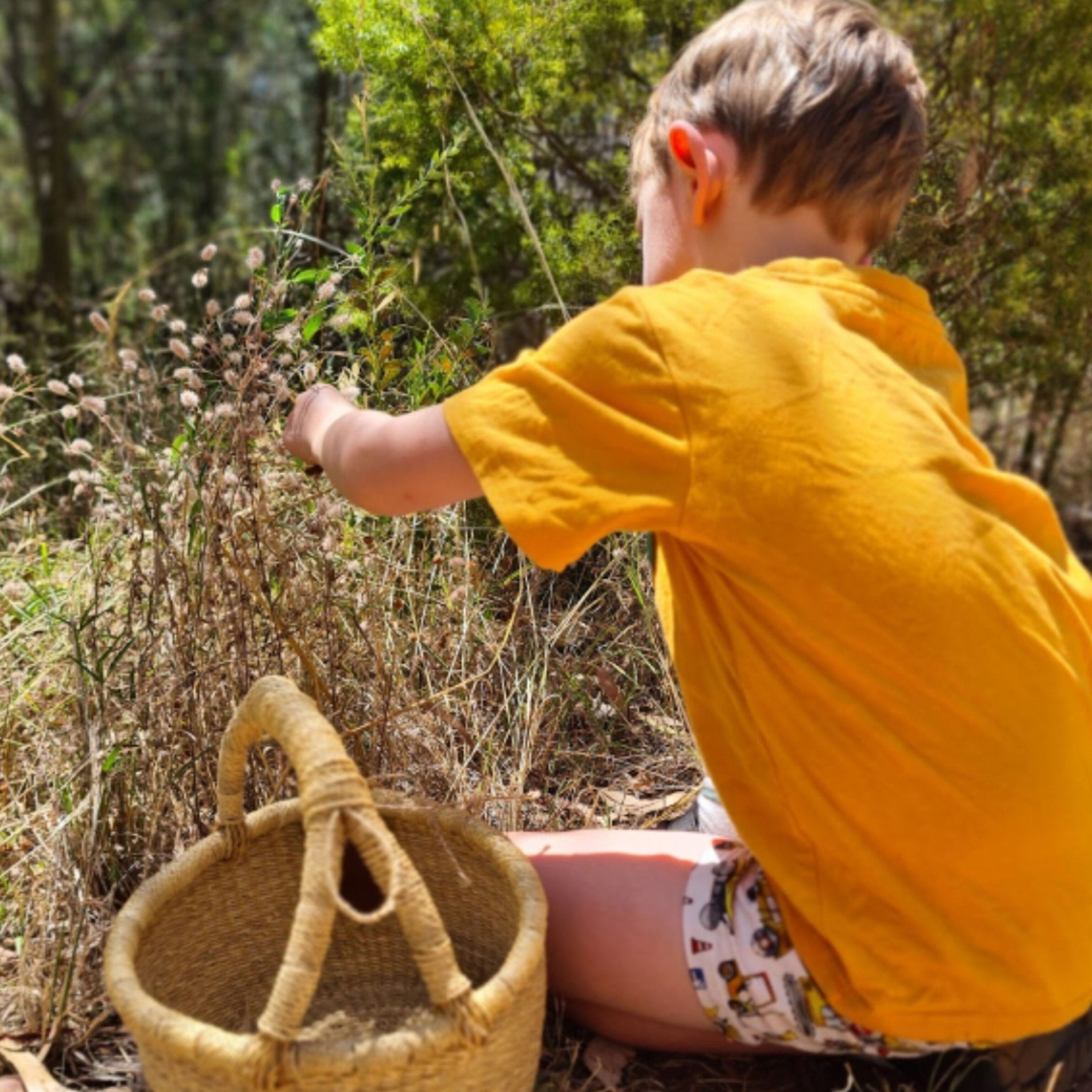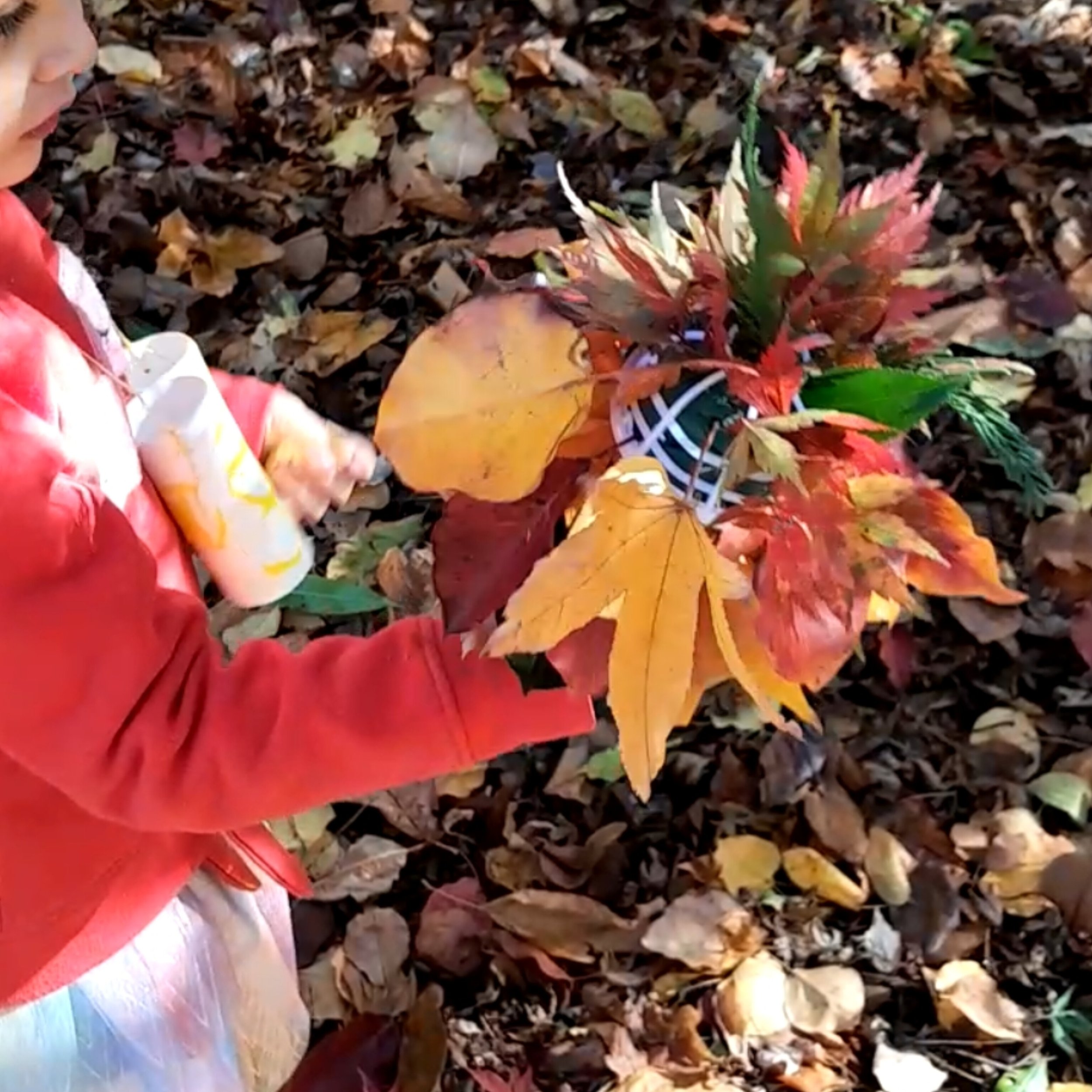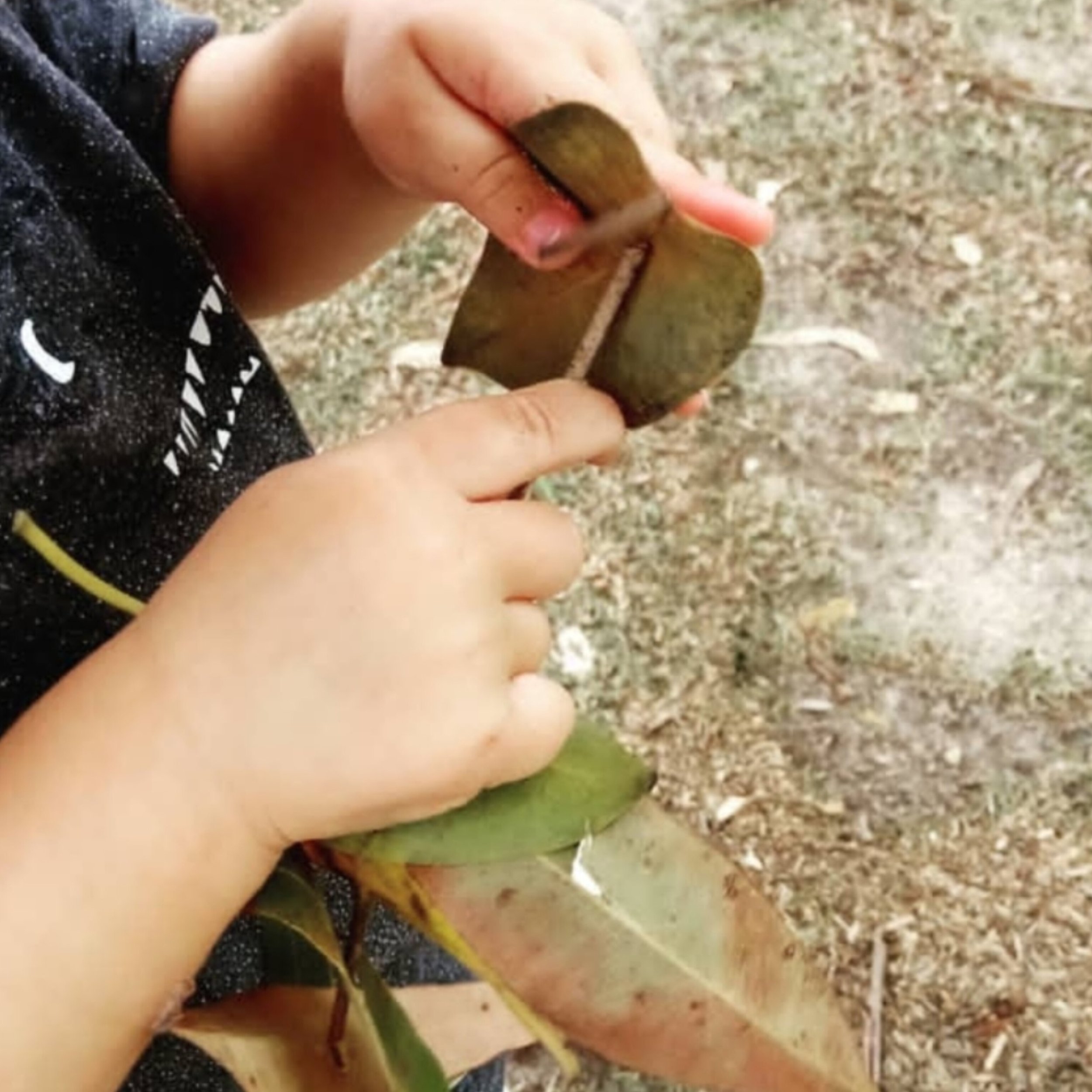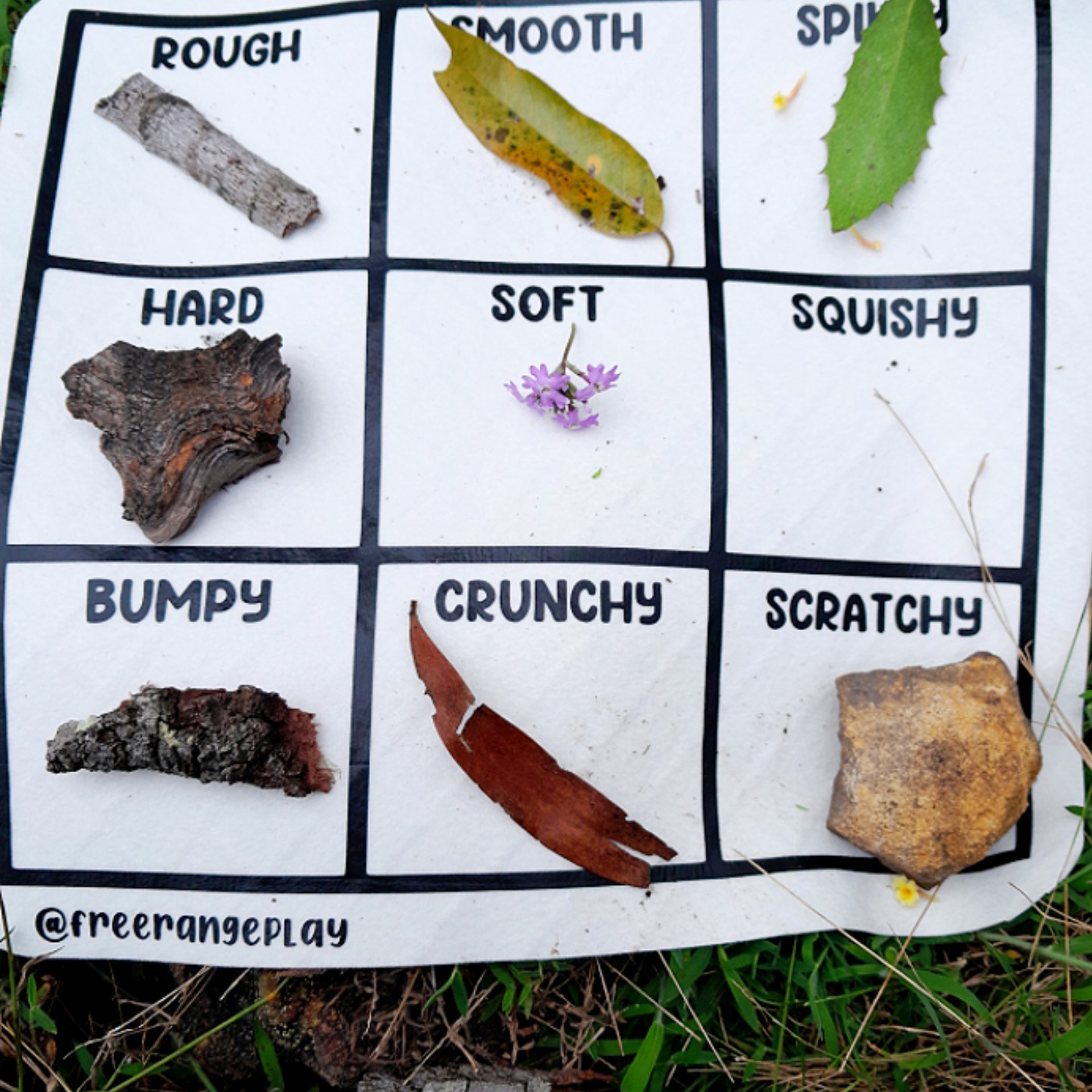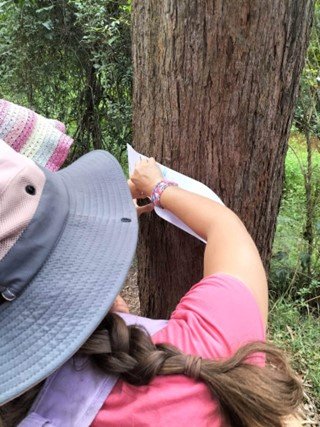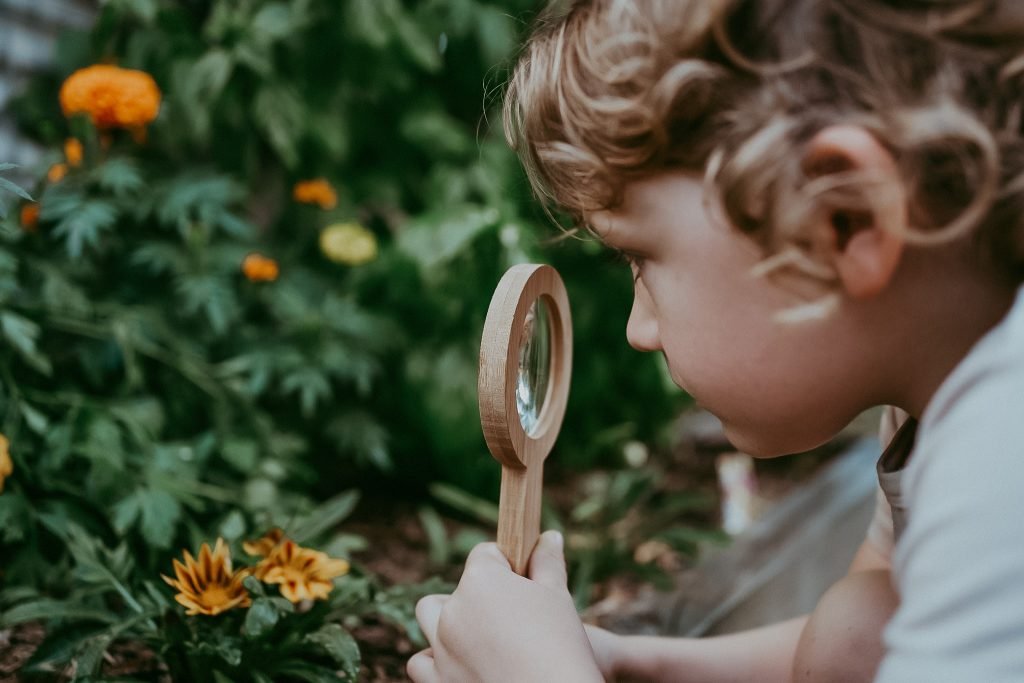5 School Readiness Activities Using a 10s Frame
Starting school is a big step for both kids and parents, and play-based learning is a fun, low-pressure way to prepare. Incorporating tools like our Silicone 10s Frame Play Mat helps kids develop foundational skills while having fun. Here are five simple activities to try:
Starting school is a big step for both kids and parents, and play-based learning is a fun, low-pressure way to prepare. Incorporating tools like our Silicone 10s Frame Play Mat helps kids develop foundational skills while having fun.
Even if you don't have a little one heading off to school in 2025, preparing for school through play starts early (and you might not even consider how the play you are doing is helping).
Here are five simple activities to try:
1. I Spy
Activity: A simple I spy game can be set up using numbers and counters (or just by writing on our silicone mats with washable markers). The aim of the game? Find the corresponding number of particular items (1 tree, 4 presents etc) and once collected, encourage your child to place them on the 10s frame and count aloud.
Learning Benefits:This activity builds counting skills and introduces one-to-one correspondence. This is a great start to number recognition and the concept that a number corresponds to an amount.
2. Make a Pattern
Activity: Use different colours or shapes to create patterns on the 10s frame. Start with something simple, like alternating colours, and encourage your child to extend the pattern.
Learning Benefits: This develops early maths skills and logical thinking.
3. Roll and Fill
Activity: Using dice, roll a number and place that many objects on the 10s frame.
Learning Benefits: This game strengthens number recognition and early addition as kids work toward filling the frame.
4. One More, One Less Game
Activity: Place a specific number of counters on the 10s frame. Ask your child to add one more or take one away, then count the total each time.
Learning Benefits: Teaches addition and subtraction basics, reinforces number sense, and supports understanding of number relationships—key skills for early maths proficiency.
5. Nature Object Exploration
Activity: Collect natural items (leaves, pebbles, flowers) during outdoor play. Place them on the 10s frame to count, sort by size, or create patterns.
Learning Benefits: Combines sensory and numeracy learning, strengthens fine motor skills, and builds connections between nature and mathematical concepts—fostering curiosity and a love for learning.
Connect kids with nature with our Nature Hunt Play Mat! This double-sided, silicone mat is designed for interactive outdoor play. One side features a nature scavenger hunt grid where kids can find items matching textures like bumpy or soft. The other side includes a 10-frame for pattern making and counting, as well as a blank face outline for kids to create nature-inspired faces—perfect for teaching about emotions.
✔️ Double sided
✔️ A3
✔️ Can be used with washable markers
🦘 Designed in Australia by Liz
🍃Connect kids with nature
These activities are a playful way to prepare for school by building essential skills like counting, problem-solving, emotional regulation, and fine motor development. Our 10s Frame Learning Play Mat is the perfect companion on this exciting journey! Remember to follow along on Instagram for more simple play activities here.
5 Easy Elf on the Shelf Ideas
5 easy elf on the shelf ideas for this Christmas.
Need some elf inspo? Check out the prompts from this years elf kit.
Toilet paper tree
Wrap the Christmas tree or a piece of furniture with toilet paper. Place the elf on top or nearby.
Cereal Box Mischief
Place the elf inside a cereal box, peeking out from the top.
Candy Cane Hunt
Hide candy canes around the house. Leave clues leading to each one, with the elf holding the first clue.
Snow Angel
Sprinkle flour or powdered sugar on the kitchen counter. Lay the elf on it, showing it made a 'snow angel'.
Shoe Train
Line up the family's shoes like a train. Place the elf as the train conductor.
Get the full list here.
Why Fizzy Potion Play is Magic for Kids’ Development
When we think of potion play, we often imagine bubbling cauldrons and sparkles of magic, but it’s so much more than that! At Clever Bugs, we believe in hands-on, sensory play experiences that encourage kids to explore their creativity, build confidence, and connect with the natural world—exactly what potion play brings to the table. Here's a look at how potion play can benefit your little ones…
When we think of potion play, we often imagine bubbling cauldrons and sparkles of magic, but it’s so much more than that! At Clever Bugs, we believe in hands-on, sensory play experiences that encourage kids to explore their creativity, build confidence, and connect with the natural world—exactly what potion play brings to the table. Here's a look at how potion play can benefit your little ones:
1. Emotional Regulation Through Creativity
Potion play allows kids to explore different textures, colours, and scents, helping them to engage all their senses. Through this, children learn to manage and express their emotions in a creative and calming way. Stirring up ingredients from nature, like petals, leaves, and colourful water, they have a chance to create a ‘magic potion’ that serves as a unique outlet for self-expression.
2. Building Confidence and Problem-Solving Skills
Creating potions is like a mini science experiment. Kids get to mix, measure, and make decisions about their creations. This process helps them build problem-solving skills, fine motor coordination, and decision-making abilities in a low-stakes setting. When they see their potions come to life, it boosts their confidence, knowing they’ve created something magical on their own.
3. Language Development and Imaginative Play
Potion play encourages storytelling, language development, and communication. As kids create potions, they often come up with stories about what each potion does, whether it's an ‘invisibility potion’ or a ‘happy spell.’ This imaginative narrative strengthens their vocabulary, helping them describe ideas and emotions in new ways.
At Clever Bugs, our potion kits are crafted to inspire wonder, support emotional development, and make learning fun. So, next time your kids start mixing their magical brews, remember: they're doing much more than playing—they’re learning, exploring, and growing.
3 Simple Kids Recipes
Simple recipes you kids will love, perfect for on the go.
A few simple recipes for kids, perfect for their Subo bottles, lunchboxes and more.
Simple chia pudding
Chia seed pudding is a great on-the-go breakfast option for busy families. Not only is it quick and simple to prepare ahead of time, but chia seeds also provide fibre (for happy tummies), iron and omega-3 fatty acids. When made with fortified milk, this chia pudding is also rich in calcium. When increasing a child’s fibre intake it is recommended to do so slowly over time alongside plenty of water.
Difficulty: Easy | Serves: 2 Subo bottles | Prep: 5 mins (soak 30 mins)
Ingredients:
1 cup milk of choice
1/4 cup chia seeds
1/2 tbsp pure maple syrup (optional)
1/4 tsp cinnamon
Method:
Step 1: Add all ingredients to a small bowl.
Step 2:Whisk until well combined.
Step 3:Cover and place in fridge for 30 minutes (ideally overnight).
Step 4:Spoon into your Subo food bottle to serve.
Variations:
Once chia pudding is prepared try one (or all) of the following:
• Stir through 1 mashed banana
• Stir through 1/4 cup unsweetened yogurt
• Stir through 1/4 cup pureed berries
Approximate nutrition per serve:
*using fortified unsweetened soy milk
Protein: 7.1g
Fat: 10.4g
Omega-3 fatty acids: 3.6g
Fibre: 7.1g
Calcium: 276mg
Iron: 3.3mg
On the go breakfast
This on-the-go breakfast bottle provides an easy solution to busy mornings. When made using cow’s milk or fortified soy milk this wholegrain breakfast is high in protein and fat to keep your child sustained for the day ahead, as well as a source of fibre and calcium.
Difficulty: Easy | Serves: 1 Subo bottle | Prep: 5 mins
Ingredients:
1/2 banana
1 breakfast wheat biscuit (fortified option for fussy eaters)
1 tbsp almond butter (or nut/seed butter of choice)
1/2 cup milk of choice
Pinch cinnamon
Method:
Step 1: In a bowl, mash the banana with a fork.
Step 2: Stir through almond butter and cinnamon.
Step 3: Add wheat biscuit to bowl and break apart with a fork.
Step 4: Pour over milk and mix well until wheat biscuit is soft and ingredients are well combined. Alternatively, use a blender until smooth.
Step 5: Spoon/pour into Subo Bottle and serve.
Approximate nutrition per serve:
Protein: 8.6g
Fat: 9.9g
Fibre: 4.8g
Total sugar: 9g
Calcium: 152.9mg
Iron: 1.7mg
Added sugar: 9g
- Naturally occurring
- Sugars from fruit: 7.2g
- Added sugar: 1.8g
Avo-choc pudding
This delicious avocado-chocolate pudding is the perfect nourishing snack or dessert. With fibre and monounsaturated fatty acids from the avocado, natural
sweetness from the banana and magnesium from the cacao, you’ll wish you made more.
Difficulty: Easy | Serves: 1 Subo bottle | Prep: 5 mins
Ingredients:
1 ripe banana
1/4 ripe avocado
1 tbsp cacao powder
1/4 cup unsweetened milk of choice
Method:
Step 1: Add all ingredients to a blender and blend until smooth and creamy.
Step 2: Spoon into Subo Bottle and serve.
Step 3: Best served immediately, but can be prepared ahead of time and stored in the fridge for 1 day.
Approximate nutrition per serve:
*Using unsweetened fortified soy milk
Protein: 4.9g
Fat: 9.4g
Monounsaturated: 4.9g
Carbohydrates: 26.5g
Fibre: 7.8g
Potassium: 615.5mg
Magnesium: 42.9mg
Vitamin C: 13.6mg
Part 1of 2: Supporting the Self-Regulation of Parents and Educators
Supporting your child’s emotional regulation starts with managing your own. When adults practice self-regulation, they’re better equipped to respond calmly, creating a ripple effect that promotes children’s emotional growth. Techniques like mindfulness and deep breathing are vital not just for your well-being but also for modelling healthy emotional responses for kids. As we stay calm, we help children feel safe, leading to a more balanced, stress-free environment. Prioritising self-care isn’t selfish; it’s essential for raising emotionally resilient children and fostering your own mental health.
In order to support our children's regulation, we need to prioritise our own self-regulation as adults. When we are emotionally regulated, we are better equipped to respond calmly and effectively, which not only benefits our interactions with children and students, but also supports our overall well-being.
When we neglect our own regulation, the stress accumulates, which can lead to burnout and emotional exhaustion. This impacts our health, relationships, and even our ability to be present in our own lives.
Supporting our regulation isn’t just about being a better parent or educator, it's also about taking care of ourselves so we can thrive and lead balanced lives. When we learn to stay calm in challenging situations, we nurture our mental and emotional health and model this essential skill to the children around us.
Why Self-Regulation Matters for Adults
The nervous system works like a mirror: when adults stay calm, it helps children feel safe. By regulating ourselves, we create a ripple effect, showing kids that calmness is possible even in moments of stress, which supports their own emotional development. Techniques like deep breathing, grounding exercises, and mindfulness can help you manage your own emotions. This self-care is not selfish; it's essential.
You can’t pour from an empty cup, and maintaining emotional balance allows you to be the best version of yourself for your children and for your own life.
Understanding How Our Nervous Systems Impact Each Other
As adults, whether parents or educators, it's essential to understand that our nervous systems can significantly impact those of children.
When we remain calm and regulated, our nervous system communicates safety and emotional stability to the
children around us. This is vital because children (especially if we are working with children impacted by trauma) might not have fully developed the ability to regulate their emotions independently.
A concept known as "mirror neurons" explains why this happens. These neurons allow children to mimic or mirror the emotional states of the adults around them. If we, as adults, become dysregulated or stressed, children often subconsciously adopt these same emotions and behaviours. This highlights the importance of maintaining our own calmness to set a stable emotional foundation for the children we support.
What to Say to a Child When You’re Dysregulated (in the Red Zone)
There will inevitably be times when we, as adults, feel overwhelmed, stressed, or dysregulated. The ups and downs of life, especially the unexpected moments can lead us to feeling this way. When this happens, it's important to validate our emotions while still setting boundaries that communicate safety and responsibility.
Here are some phrases you might say:
• "I’m feeling really frustrated right now and need a moment (or a few moments) to calm down before we continue to ..."
This phrase acknowledges your frustration while indicating that you need space, modelling the importance of self-regulation.
• "I need a minute to breathe, then we can talk about what’s going on with..."
This allows you to step back and model the act of taking a breather before addressing the issue.
By using phrases like these, you communicate to the child that it's okay to experience strong emotions but that you also have a responsibility to manage them in a healthy way.
What to Say After You’ve Regulated
Once you've regained control over your emotions, there is a golden opportunity to use this moment as a learning opportunity. Acknowledging your dysregulated moment humanises you and teaches the child how to manage similar situations.
Here are some ways you might do that:
• "I was feeling very upset earlier, and I needed some time to calm down."
This phrase explains to the child that everyone, including adults, can get
upset and need time to regulate.
• "I want to show you how I calmed my body down and we can try doing it together."
This is an excellent opportunity to model self-regulation techniques, such as deep breathing or grounding, that the child can learn and use in their own moments of distress.
Strategies for Self-Regulation for Adults
To effectively co-regulate with children, adults must have their own self-regulation strategies in place. Here are some key practices that can help adults manage their own emotions:
• Breathing exercises: Simple techniques like deep belly breathing can help activate the parasympathetic nervous system, calming the body down.
• Grounding techniques: Focus on the present moment by using your five senses. For example, feel the texture of an object or notice five things you can see around you.
• Positive self-talk: Remind yourself that it’s okay to take a pause. Phrases
like, "I can handle this," or "It's okay to step away for a moment," can reinforce emotional control.
• Time-outs for adults: Just like children, adults benefit from brief breaks to cool down and reflect. Taking a short walk or engaging in a quick mindfulness exercise can help you return to the situation with a clearer mind. If your child is old enough to understand a timer, some adults like to give themselves a 2-5 minute visual timer that communicates while the timer is going the adult is doing their own regulation activity and to not interrupt unless it is an emergency.
In conclusion, self-regulation is foundational not just for our own well-being but for teaching children how to manage their emotions too. Our ability to stay regulated in moments of stress can set the stage for more emotionally resilient children. As adults, we must prioritise our emotional health, not only to foster a stable environment for the children in our care but also to support our own mental and emotional well-being.
About The Author
Hi, I’m Greer Kharidi,
I help educators teach with confidence, clarity, and community, ensuring they reach every student while maintaining a healthy mindset and work-life balance.
My journey wasn’t easy, and I’m passionate about helping others avoid the mistakes I made. Through Trauma-Aware Ed, I support educators in mastering their classrooms with confidence and avoiding burnout.
I’m also excited to share that my children’s book exploring equity and equality is coming soon!
Follow me on Facebook at Trauma-Aware Ed or Instagram at @trauma_aware_ed for helpful tips and updates on upcoming opportunities.
Connect soon!
Greer x
Best Advent Calendar Fillers for Kids
As the holiday season approaches, the excitement of counting down to Christmas begins to build. But for many parents, finding the perfect advent calendar fillers that go beyond sugary treats and endless trinkets can be a real challenge. You want something that sparks joy, nurtures creativity, and keeps your little ones engaged without adding to the holiday clutter. At Clever Bugs, we understand that you're looking for meaningful, screen-free activities that support your child's holistic development while keeping the magic of the season alive.
For many parents, finding the perfect advent calendar fillers that go beyond sugary treats and endless trinkets can be a real challenge. You want something that sparks joy, nurtures creativity, and keeps your little ones engaged without adding to the holiday clutter.
At Clever Bugs, we understand that you're looking for meaningful, screen-free activities that support your child's holistic development while keeping the magic of the season alive.
That's why we've curated a list of the best advent calendar fillers that are not only fun but also foster learning and connection—making this festive season truly special for your family.
More bang for your buck!
Spread these products across multiple days, so your kids can build on their collection each day! This not only keeps the excitement going but also saves you from buying multiple items. It's a win-win for both you and your little ones!
I hope these ideas inspire you to make this Advent season truly magical for your little ones. Remember, it’s not just about the gifts—it’s about creating memories, sparking imagination, and sharing moments of joy. Thank you for letting Clever Bugs be a part of your family's holiday traditions. Wishing you and your loved ones a season filled with wonder and happiness!
Warmly,
Liz
Healthy Eating for Busy Mums: Quick and Nutritious Meal Ideas
Life with kids can be a whirlwind and finding time to prepare healthy meals for yourself can feel like a monumental task. Often, mums are the last to eat and end up grabbing whatever is easiest, which isn’t always the most nutritious choice. But don’t worry, I’ve got you covered with some innovative and simple meal ideas that you can easily whip up, even on the busiest days.
Life with kids can be a whirlwind and finding time to prepare healthy meals for yourself can feel like a monumental task. Often, mums are the last to eat and end up grabbing whatever is easiest, which isn’t always the most nutritious choice. But don’t worry, I’ve got you covered with some innovative and simple meal ideas that you can easily whip up, even on the busiest days. These recipes are designed to ensure you, as a mum, are well-fed and energised, ready to tackle whatever the day throws at you. Because some day’s (maybe everyday) it feels like a marathon.
The Importance of Quick and Nutritious Meals
We all know how crucial it is to provide our kids with nutritious meals, but mums need to be nourished too. The good news is that healthy eating doesn’t have to be complicated or time-consuming. By focusing on whole foods, simple preparation methods and smart shortcuts like using frozen vegetables, you can ensure you get the nutrients you need without spending hours in the kitchen. Don’t forget you are able to eat your favourite foods too, even if the rest of the family don’t like them.
Meal Planning and Preparation Tips
1. Plan Ahead: Take a few minutes at the beginning of the week to plan your meals. This not only saves time but also helps reduce stress. Having a plan means you’re less likely to skip meals or make unhealthy choices.
2. Batch Cooking: Prepare larger quantities of food that can be used for multiple meals. For example, cook a big batch of quinoa or brown rice and use it throughout the week in different recipes. This way, you always have a base for a quick and healthy meal.
3. Use Frozen and Pre-Cut Ingredients: Frozen vegetables are a fantastic time-saver and are just as nutritious as fresh ones. Many supermarkets offer pre-cut and pre-washed vegetables and fruits. These can save you a lot of time in the kitchen.
4. Simple Recipes: Focus on recipes with minimal ingredients and steps. The fewer the ingredients and steps, the quicker the meal will come together.
Quick and Nutritious Breakfast Ideas for Mums
Is this the meal you skip the most? That’s understandable when you are trying to get the family ready for the day ahead and out the door. Breakfast is just as important for mums as it is for the rest of the family, providing a nutritious start to the day. So, here are a couple of quick and easy ideas, feel free to make these your own with ingredients you love:
Overnight Oats 🥣
Ingredients:
· 1/2 cup rolled oats
· 1/2 cup milk (or any milk alternative)
· 1 tablespoon chia seeds
· 1 teaspoon honey or maple syrup
· Your favourite toppings - berries, nuts, sliced banana, etc
Instructions:
1. Combine the oats, milk, chia seeds and honey in a jar or container.
2. Stir well and refrigerate overnight.
3. In the morning, add your favourite toppings and enjoy.
Avocado Toast 🥑
Ingredients:
· 1 ripe avocado
· 2 slices whole grain bread
· a pinch of salt, pepper and red pepper flakes (optional)
· a squeeze of lemon juice
Instructions:
1. Toast the bread.
2. Mash the avocado in a bowl.
3. Mix in salt, pepper, red pepper flakes and lemon juice.
4. Spread the avocado mixture on the toast and enjoy.
Simple and Healthy Lunch Ideas for Mums
A balanced lunch is crucial for maintaining energy levels throughout the day, helping to avoid that dreaded 3pm slump that many experience. Ensuring your mid meal includes a mix of protein, healthy fats and complex carbohydrates can keep you feeling satisfied and energised. These quick and nutritious lunch ideas are perfect for busy mums who need a boost to power through their afternoon. Many of my clients have found that incorporating a balanced lunch significantly improves their overall energy and productivity.
Quinoa Salad 🥗
Ingredients:
· 1 cup cooked quinoa (can use precooked packets quinoa/rice)
· 1/2 cup chickpeas
· 1/2 cup diced cucumber
· 1/2 cup halved cherry tomatoes
· 1/4 cup diced red onion
· 2 tablespoons fresh parsley (chopped)
· 2 tablespoons olive oil
· 1 tablespoon lemon juice
· salt, and pepper
Instructions:
1. In a large bowl, combine the quinoa, chickpeas, cucumber, tomatoes, red onion, and parsley.
2. Drizzle with olive oil and lemon juice,
3. then season with salt and pepper.
4. Toss well to combine.
5. Eat & Enjoy
Ham and Salad Sandwich🥪
Ingredients:
· 2 slices of wholemeal bread (or whatever bread you have)
· 2 slices of lean ham (chicken, roast beef)
· 1 slice of cheese
· A handful of leafy greens
· Tomato slices
· Cucumber slices
· Any other salad ingredients you would like to add
· 1 tablespoon hummus or light mayonnaise or butter (whatever you have)
· Salt and pepper, to taste
Instructions:
1. Spread the hummus or light mayonnaise or butter evenly on each slice of wholemeal bread.
2. Layer the leafy greens on one slice of the bread.
3. Then, add the slices of lean ham on top of the greens.
4. Place the slice of cheese over the ham. Then, layer the tomato slices, cucumber slices and red bell pepper slices on top.
5. Sprinkle a little salt and pepper over the vegetables, if desired.
6. Place the other slice of bread on top, hummus side down.
7. Cut the sandwich in half if desired and enjoy immediately
Dinner Ideas for Busy Mums
Family meals are a wonderful opportunity to unwind and connect with your loved ones after a busy day. They provide a perfect setting for you to download from the day’s events and introduce your kids to a variety of foods. Food exposure is crucial for helping children become more comfortable with different foods and encouraging them to experiment with new flavours and textures. Plus, it ensures that you, Mum, get to enjoy some delicious and nutritious meals. Here are some dinner ideas to inspire your family mealtime and keep everyone’s taste buds happy.
Recipe 1: Taco Table Board 🌮
The taco table board is a fun and interactive meal that allows everyone to create their own tacos just the way they like them. It's perfect for family meals and accommodates even the fussiest eaters.
Ingredients:
· 500g ground beef or turkey
· 1 packet taco seasoning
· 1 can black beans, drained and rinsed
· 1 cup corn kernels (fresh, canned, or frozen)
· 1 capsicum, sliced
· 1 cup cherry tomatoes, halved
· 1 cup shredded lettuce
· 1 cup shredded cheese
· 1 avocado, diced
· Salsa and sour cream, for topping
· Taco shells or tortillas
Instructions:
1. Cook the ground beef or turkey in a skillet over medium heat until browned.
2. Drain any excess fat.
3. Add the taco seasoning and water as per instructions on taco seasoning packet.
4. Cook as per packet instructions.
5. Arrange all the ingredients on a large platter or board, placing each item in its own section.
6. Place the taco shells or tortillas in the centre.
7. Let everyone create their own tacos by choosing their favourite toppings.
Recipe 2: Deconstructed Spaghetti 🍝
Deconstructed spaghetti is another great shared family meal. By placing all the ingredients separately, everyone can build their own plate, which is perfect for picky eaters.
Ingredients:
· 500g spaghetti
· 500g ground beef or turkey
· 1 jar marinara sauce (any spaghetti sauce you like)
· 1 cup shredded cheese
· 1 cup grated carrot
· 1 cup sliced mushrooms
· 1/2 cup sour cream
· Fresh basil or parsley, for garnish
Instructions:
1. Cook the spaghetti according to package instructions. Drain and set aside.
2. In a skillet, cook the ground beef or turkey over medium heat until browned.
3. Drain any excess fat.
4. Then stir in the marinara sauce and simmer until heated through.
5. Arrange all the ingredients on separate plates or bowls.
6. Let everyone build their own plate of spaghetti, choosing their favourite toppings.
7. Making Healthy Eating a Habit
Making Healthy Eating a Habit
Incorporating quick and nutritious meals into your routine can make a significant difference in your health and well-being. By planning ahead and keeping recipes simple, you can enjoy delicious meals without the stress and time commitment. Remember, healthy eating is about making consistent, mindful choices that nourish your body and fit into your lifestyle.
Life with kids can be hard, but feeding yourself healthy meals doesn’t have to be. By taking a little time to plan and prepare nutritious meals, you can ensure that you are well-fed and healthy, ready to take on whatever the day brings. The recipes and tips provided are designed to make healthy eating easier and more accessible, no matter how hectic life gets.
Don’t forget, you deserve to enjoy your favourite foods too, even if the rest of the family doesn’t like them. Incorporate meals that cater to your tastes and dietary needs. Making small changes, like planning meals ahead or using pre-cut ingredients, can have a big impact on your overall health and energy levels.
So, the next time you’re feeling overwhelmed with meal preparation, remember that healthy, quick, and delicious meals are within reach. Prioritise your nutrition, involve the family in mealtime and create a balanced approach to eating that works for you. Here’s to happy, healthy, and stress-free cooking!
Happy cooking!
Kaz
Mental load by Dr Bek
The weight of anticipating, identifying, deciding, and monitoring everything and everyone aka the mental load of motherhood.
The concept of invisible labour – the unpaid work predominantly shouldered by women – is well-documented. From managing household chores to providing emotional support during challenging times like lockdowns, women often bear the brunt of these responsibilities. And while there's been progress in recognising this burden, the scales are far from balanced.
I am going to give you some techniques you can implement today, to delegate some of this load to other members in your family. Remembering we each need to lead by example, empowering our other family members with the skills they need to take on some of the load. Doing it ALL does not help us or our families.
When I landed my first full-time job, the reality of "only" four weeks' annual leave hit me hard. Then, as a small business owner, the hustle intensified. And when parenthood entered the picture, it felt like my workload tripled. Balancing work, family, and personal life – it's a juggling act that leaves us wondering how there's anything left in the tank.
Mental load encompasses the intangible burden of managing the logistics and schedules of family life while ensuring everyone's needs are met. When this work isn't valued or recognised, it can lead to exhaustion and demoralisation.
What needs to change? It starts with acknowledging the mental labour involved in keeping everything running smoothly – the constant mental checklist of tasks and responsibilities that often goes unnoticed and unappreciated. Rebalancing this load is crucial for the well-being of female workers, leaders, and entrepreneurs who are at higher risk of burnout and career setbacks due to the invisible work they undertake.
Eve Rodsky, in her book "Fair Play," outlines three components of every task:
1. Execution involves physically completing tasks like laundry, cooking, or paying bills.
2. Planning entails the mental work of anticipating, deciding, and organizing resources for successful task completion.
3. Emotional labour involves managing feelings, providing support, and maintaining relationships while performing tasks, ensuring emotional well-being for oneself and others involved.
To rebalance the mental load, start by challenging past influences and outdated assumptions about gender roles, and actively challenge current habits that perpetuate inequality. Allison Daminger breaks down the mental load into four parts: anticipate, identify, decide, and monitor.
Practical Tips to Start Working on Better Managing Your Mental Load
Anticipate:
Establish a shared family calendar to record commitments and set reminders for important tasks. Hold regular family meetings to discuss upcoming plans and household needs. Keep a list of groceries to anticipate purchases.
Identify: Organise tasks by priority and delegate responsibilities to family members. Track recurring tasks to streamline future planning. Use checklists to monitor progress on various projects. Teach your children that housework is a team effort and establish a shared approach to household responsibilities early on to create a happier and healthier family life.
Decide:
Create decision-making criteria for routine tasks. Prioritise tasks based on urgency and delegate authority accordingly. Involve all family members in major decisions through consensus-building techniques. Communicate openly with your partner to ensure an equitable division of labour.
Monitor: Conduct regular check-ins to assess progress and address concerns. Use tracking tools to monitor household effectiveness. Foster open communication and celebrate achievements to reinforce positive behaviours.
At a national level, the Australian government is confronting the reality of gender inequality that limits our collective progress. While entrenched biases persist, there's a growing momentum to challenge these norms and create a more equitable society. As women juggling the demands of the mental load, it's up to us to lead by example, setting healthy boundaries and inspiring others to thrive alongside us.
About Dr Bek
I work with people who want to improve their personal well-being and interactions with others to feel more content and on top of life.
My practical strategies are tailored for clients who describe a feeling of languishing – having a pervasive or acute sense of being discontent or unsatisfied, yet unable to effectively move past it.
I want to help you to find ways to achieve your life goals without feeling you need to compromise your well-being.
30+ years of psychology experience helping busy people develop better skills to address challenges in professional, personal and relationship functioning
Over a decade as a university professor teaching higher degree clinical and forensic psychology students and conducting research into human mind and behaviour
Criminal behaviour analyst with an international and national reputation and a special interest in profiling and treatment of deliberate firesetting
20+ years as a military (uniformed) psychologist in the Australian Defence Force
Messy Sensory Play Recipes by Sam from Messy Play for Two
Are you interested in trying some messy sensory play with your little one?
Messy and sensory play are used pretty interchangeably, it allows your toddler to discover new smells and colours, as well as enabling them to be comfortable with a range of textures.
Messy sensory play gives children the opportunity to use their creativity while developing dexterity, imagination, and physical, social and emotional skills.
Read below for my top three taste safe* messy sensory recipes:
Oobleck
Oobleck is an interesting messy play for you to try with your little one. It is a Non-Newtonian fluid - it acts as a liquid when in resting, and a solid when pressure is applied.
2 cups of cornflour
1 cup of water (add food colouring of choice to your water)
Mix with spoon or hand
Provide your child with some tools when trying this, some spoons, scoops, cups and bowls, for them to explore, before they become comfortable to explore with their hands! You can then start adding figurines, or other additions to theme your oobleck!
Jelly
Jelly has got to be one of my kids’ favourites when it comes to messy play! And I’ve found the perfect recipe to making firm jelly for your little one to investigate with their hands, a rip apart with their fingers!
3 tablespoons of gelatine powder
Stir into 250ml of boiling water until dissolved
Add 250ml of cold water and stir
Add food colouring of choice
You can then either add this to a baking paper lined tray to cut into shapes, or (my favourite) add into a tray with shapes or images.
Jelly play has so many benefits for your child. It helps to strengthen the muscles in their fingers, which is essential for handwriting, as well as bilateral coordination (using both sides of their body at once)
Chia Slime
Our final recipe can receive mixed reviews, but it was one of the first messy bases my girls really enjoyed!
1/4 cups chia seeds
1 3/4 cups food coloured water
Leave to soak overnight
Add between 1-4 cups of cornflour depending on desired consistency
There are loads of great themes you can add to your chia slime! You can either play on its own, or create a Dino Swamp, Frog Pond, or Muddy African Animal play!
Be warned though, this one can get messy!
So, the next time you’re looking to try some messy sensory play with your little one, why not try one of these recipes? Bonus, they don’t require too many ingredients and aren’t difficult to create!
About the author
My name is Sam, and I’m the very lucky mumma to active twin toddler girls H & C. I started our play account, @messyplayfortwo, as a place to document and share the fun, and often messy activities we enjoy! As my girls have grown, their interests have changed, but will always be completely immersed in anything they can be covered in!
Sam is a valued member of the Clever Bugs community. Make sure you head over and check out her page here.
Worried about the mess? You are not alone! Try containing the mess in a Crafty Pod (below) or taking your messy play outside!
5 activities for kids using play scarves
Unlock the magic of play scarves – the ultimate tool for sparking your child's imagination! Here are 5 simple yet captivating ways to transform a play scarf into endless fun.
Unlock the magic of play scarves – the ultimate tool for sparking your child's imagination! Here are 5 simple yet captivating ways to transform a play scarf into endless fun:
1. Craft a Flag
Attach your play scarf to a stick and create a vibrant flag. It's a joy to see children's delight as it dances in the breeze.
2. Small World Adventures
Play scarves are the perfect, mess-free base for imaginative small worlds. They bring a touch of sensory wonder to playtime, no clean up required!
3. Hero’s Cape
In a few simple twists, a play scarf becomes a superhero cape, ready for daring adventures and pretend play.
4. Gift Wrapping
The most beautiful and reusable gift wrap you will ever need.
5. Sensory Exploration
Play scarves provide a unique sensory experience, perfect for tactile play and exploration. Use them as a mess free alternative to sensory bases.
Embrace these screen-free activities to encourage creativity, sensory play, and imaginative exploration. Dive into the endless possibilities with your child today!
Check out the new Fun Scarves range from Funsquare we have added to the store here!
Nature Play
Getting outside and exploring nature, whether in your own backyard or going for a bush walk is intrinsic to child development. Not only does being outside help to regulate both child and adult emotions but building a connection and love of the natural environment could not be more important than it is right now.
Getting outside and exploring nature, whether in your own backyard or going for a bush walk is intrinsic to child development. Not only does being outside help to regulate both child and adult emotions but building a connection and love of the natural environment could not be more important than it is right now.
Children find wonder in what we may see as the simplest of things, a rock or a leaf. Do your pockets end up full of treasure collected by your child? Mine definitely do! Nurturing this wonder and resisting the urge to hurry them up to reach your destination is so important.
We want them to be observant and notice the ants on a log and follow them to where they are going, building critical thinking skills. We always take our magnifying glass to really get up close and investigate things. We always stop to look and feel what is around us. My daughter who is 3 and a half loves moss, she call it the "little carpets" on the rocks.
Ways you can encourage your little ones to engage in you nature walks:
Make journey sticks: take some sticky tape or some twine to wrap around a good stick, then collect things along you walk like leaves, feathers and seed pod adding to your stick. You end up with a beautiful nature wand or journey stick at the end. Alternatively you can use a nature boquet holder to make a beautiful nature boquet.
Make leaf kebabs: using a stick thread leaves onto it. A great fine motor activity and you can even try and make a rainbow or a pattern.
Take a basket to collect you treasure. You can then use this in future plays at home.
Go on a senses treasure hunt: find something hard, soft, crunchy, heavy etc
Make some leaf or bark rubbings. Get some paper and lay it over some bark or a leaf, rub a crayon over it making a beautiful rubbing of the texture.
Remember it’s the journey not the destination. Splash in the puddles, dig in the dirt, collect leaves and rocks and memories along the way.




